In this week’s issue of The Savvy Diabetic:
-
- URGENT ADVOCACY CAMPAIGN: Competitive Bidding / Deadline 8/29/2025
- Luna Health Raises $23.6M for Tiny Insulin Patch Pump
- GLP-1 Therapy & T1D Survey Report by DiabetesMine Innovation Project
- ADCES 2025 Updates Podcast by Justin Eastzer/Diabetech
- Healing Wounds with Multimodal Botanical Hydrogel
- Who Is at Most Risk for Hypoglycemia?
- Marijuana & Diabetes, by TCOYD.org Series Real Talk with My Doc
- The Disappearing Voices of “Juvenile Diabetes”
URGENT ADVOCACY CAMPAIGN: COMPETITIVE BIDDING CTA / Deadline: Friday, 29 August 2025
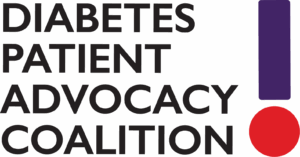 TAKE ACTION NOW: https://www.diabetespac.org/act-now
TAKE ACTION NOW: https://www.diabetespac.org/act-now
The Centers for Medicare & Medicaid Services (CMS) has proposed a competitive bidding program for CGMs and insulin pumps, and to classify these devices under a rental program under Medicare. The proposal would have significant impacts on patients with diabetes: insulin pumps and CGMs would become rented equipment.
-
-
- Patients would rent their devices rather than own them.
- Patients may have to return their devices before getting a new one — risking interruptions in care that could be dangerous.
- The number of diabetes equipment suppliers is being whittled down from hundreds to somewhere between 2 AND 9 national suppliers, drastically limiting choice and creating coverage gaps.
-
There is no indication that this program would save beneficiaries money as proposed. This starts with Medicare—but private insurance always follows. If passed, this will affect ALL of us.
How can I take action? We made the process simple: using the link above, submit our pre-written letter with any of your additional comments to CMS by Friday, August 29, 2025.
The Diabetes Patient Advocacy Coalition (DPAC) is an alliance of people with diabetes, caregivers, patient advocates, health professionals, disease organizations, and companies working collaboratively to promote and support public policy initiatives to improve the health of people with diabetes. DPAC seeks to ensure the safety and quality of medications, devices, and services, and access to care for all 38 million Americans with diabetes. Learn more at Diabetespac.org
Luna Health raises $23.6M for tiny insulin patch pump by Elise Reuter for MedTechDive.com, 20 August 2025.
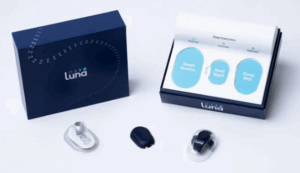 Luna Health, a startup developing an insulin patch pump to help with overnight glucose control, raised $23.6 million in Series A funding. The company is developing a small patch pump with a fully closed-loop insulin dosing algorithm, intended for people with Type 1 and Type 2 diabetes who rely on insulin pens.
Luna Health, a startup developing an insulin patch pump to help with overnight glucose control, raised $23.6 million in Series A funding. The company is developing a small patch pump with a fully closed-loop insulin dosing algorithm, intended for people with Type 1 and Type 2 diabetes who rely on insulin pens.
CEO John Sjölund and CFO Jon Brilliant, both co-founders of the company, previously served as executives at Bigfoot Biomedical, a company that manufactures smart pen caps that utilize data from continuous glucose monitors to provide insulin dose recommendations. Abbott acquired the company in 2023. Beta Bionics CEO Sean Saint is also a co-founder and board member of Luna.
They started the company with the goal of making insulin patch pumps accessible to people who require multiple daily insulin injections. During the day, people continue to use their insulin pens. However, at night, the patch pump can deliver rapid-acting insulin, calculating the dose automatically using CGM data.
“We regularly hear from the diabetes community about their struggles with nighttime glucose control,” Sjölund said. “Parents of children with Type 1 diabetes who set multiple alarms to check blood sugar levels. Adults with Type 2 diabetes who avoid evening activities because they’re worried about overnight complications.”
GLP-1 Therapy & Type 1 Diabetes Survey Report was published by DiabetesMine Innovation Project with d-data exChange, August 2025.
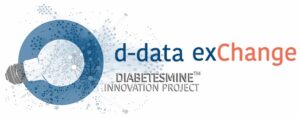 This report presents findings from a 2025 survey conducted by the DiabetesMine #DData innovation team to gain a better understanding of how individuals living with type 1 diabetes (T1D) engage with GLP-1 receptor agonist therapies. While GLP-1 medications are currently not FDA-approved for the treatment of type 1 diabetes (T1D), their off-label use is expanding. Patients are seeking—and in many cases, accessing—these therapies through various care and insurance pathways.
This report presents findings from a 2025 survey conducted by the DiabetesMine #DData innovation team to gain a better understanding of how individuals living with type 1 diabetes (T1D) engage with GLP-1 receptor agonist therapies. While GLP-1 medications are currently not FDA-approved for the treatment of type 1 diabetes (T1D), their off-label use is expanding. Patients are seeking—and in many cases, accessing—these therapies through various care and insurance pathways.
Themes and Trends:
-
-
-
-
- Patient-Led Demand: A significant number of patients (28%) discussed GLP-1 therapy with their providers. This suggests a shifting dynamic in diabetes care where patients are proactively researching and requesting treatment options.
- Off-Label, Yet Effective: Although GLP-1 therapy remains off-label for T1D, the majority of users in this survey reported meaningful benefits, particularly in reduced insulin needs and improved glycemic control.
- Systemic Misalignment: Multiple comments suggest that insurance structures and provider protocols are currently not equipped to meet demand or accurately reflect the real-world outcomes of GLP-1 use among patients with T1D.
-
-
-
Implications and Next Steps: These survey findings offer valuable insights into a rapidly evolving area of type 1 diabetes care. While GLP-1s are not formally approved for this population, patients are seeking and accessing them—and many are reporting improved outcomes.
Recommended next steps:
-
-
-
-
- Further clinical studies to gather data and real-world patient experience with this therapy
- Increase provider education about real-world use and patient-led interest
- Expand insurance and policy-level discussions informed by patient experience
- Translate findings into public-facing
-
-
-
Read more: GLP-1 Therapy & Type 1 Diabetes Survey Report
ADCES 2025 Updates: The Future of Diabetes Care, New Tech & Cure Progress by Justin Eastzer for Diabetech.info, 17 August 2025.
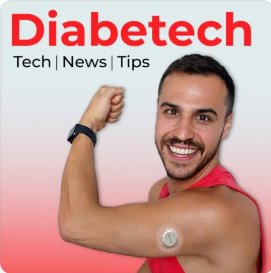 ADCES just wrapped—and if you’ve never heard of it, this is the annual conference where diabetes care and education specialists come together to learn, share, and push the field forward. Unlike ADA’s research-heavy meeting, ADCES focuses on practice: how to translate science and technology into better outcomes for people with diabetes.
ADCES just wrapped—and if you’ve never heard of it, this is the annual conference where diabetes care and education specialists come together to learn, share, and push the field forward. Unlike ADA’s research-heavy meeting, ADCES focuses on practice: how to translate science and technology into better outcomes for people with diabetes.
This year’s event in Phoenix was packed with a range of hot topics. A big one: AI in diabetes care. Sessions made it clear that educators can’t ignore it—“use it or lose your job” was a recurring theme. But it’s not all doom and gloom. AI is being positioned as a tool to reduce paperwork, free up time with patients, and even improve empathy in communication—so long as it’s used responsibly.
There were also big developments in diabetes technology. On the show floor, Pivot from Modular Medical made its debut—a new pump design that surprised many. There was also buzz around DIY systems like Trio, a sign that even conservative groups are acknowledging open-source tools. And automation continues to stand out as the closest thing we have to a cure.
Speaking of cures, one of the most exciting updates was just how close we may be to a cure. Vertex has successfully transitioned 10 patients completely off insulin with islet cell therapy, while Sana recently announced its first patient to be off insulin without the need for immunosuppressants. It’s early days, but momentum feels real, with trials actively recruiting.
And then there’s the human side of diabetes care. Only about 7% of people with diabetes ever see a diabetes educator, despite the huge impact they can have on nutrition, tech, and mental health.
Listen to the Podcast, Episode 119: ADCES 2025: The Future of Diabetes Care, New Tech & Cure Progress
Healing wounds with a multimodal botanical hydrogel by Sung Ho Steve Bae, et al, and published by PubMed.ncbi.nlm.nih.gov, 1 July 2025.
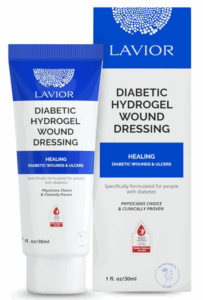 Diabetic foot wounds pose many challenges during the healing process and often become hard-to-heal (chronic) wounds. This study compared a novel botanical hydrogel with a widely used hydrogel to determine both its non-inferiority and impact on the progress of diabetic foot wounds.
Diabetic foot wounds pose many challenges during the healing process and often become hard-to-heal (chronic) wounds. This study compared a novel botanical hydrogel with a widely used hydrogel to determine both its non-inferiority and impact on the progress of diabetic foot wounds.
The study was a prospective, double-blinded, randomised controlled study comparing healing outcomes. There were two cohorts: one treated with LAVIOR Diabetic Wound Gel (LDWG; Lavior Pharma Inc., US), which contains botanical extracts, and the other treated with SoloSite Wound Gel (SSWG) (Smith+Nephew Inc., US). The patients treated with LDWG demonstrated at least as much progress in healing as those treated with SSWG. There was a greater reduction in wound surface area in the LDWG group from baseline to the end of the study than in the SSWG group. Reduction in pain was significantly improved in wounds treated with LDWG compared with SSWG.
Conclusion: In this study, LDWG demonstrated non-inferiority to SSWG, with better results observed in pain reduction and surface area reduction. Further study is indicated.
Read more: Healing wounds with a multimodal botanical hydrogel
Who Is at Most Risk for Hypoglycemia? by Dr. Steve Edelman for LinkedIn.com, 18 August 2025.
Several factors can increase the risk of hypoglycemia for people with diabetes. These factors are multifaceted and encompass patient, treatment, and social/environmental/structural-related aspects. Awareness of these can help people with diabetes and healthcare professionals adapt diabetes management plans to minimize the risk of hypoglycemia.
Read more: Who Is at Most Risk for Hypoglycemia?
Marijuana & Diabetes, by TCOYD.org series Real Talk with My Doc: For Teens and Young Adults with Type 1 Diabetes (AND others!), July 2025.
 Ever wonder what Marijuana actually does to your blood sugar when you have type 1 diabetes? Spoiler: It’s not just about the munchies. T1D influencer Mary Comeau and Dr. Manasi Jaiman break down the smart prep tips and real risks for using marijuana with diabetes—like setting loud CGM alerts, staying hydrated, and pre-portioning snacks to avoid low blood sugars and the snack spiral. They’re not here to say don’t, but if you do, knowing how to stay safe makes all the difference.
Ever wonder what Marijuana actually does to your blood sugar when you have type 1 diabetes? Spoiler: It’s not just about the munchies. T1D influencer Mary Comeau and Dr. Manasi Jaiman break down the smart prep tips and real risks for using marijuana with diabetes—like setting loud CGM alerts, staying hydrated, and pre-portioning snacks to avoid low blood sugars and the snack spiral. They’re not here to say don’t, but if you do, knowing how to stay safe makes all the difference.
See more: “Real Talk with My Doc” Videos
The Disappearing Voices of “Juvenile Diabetes” by Don Muchow for T1Determined.org.
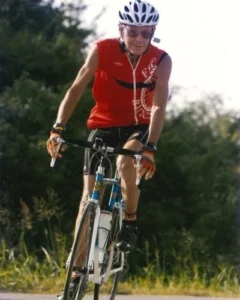 Not long ago, a Type 1 Diabetic friend of mine, Jim West, passed away at the age of 92. Jim was the leader of a cycling team called the Rusty Needles. The team’s members were mostly older Type 1s like me who had been diagnosed as children, back when the disease was called juvenile diabetes.
Not long ago, a Type 1 Diabetic friend of mine, Jim West, passed away at the age of 92. Jim was the leader of a cycling team called the Rusty Needles. The team’s members were mostly older Type 1s like me who had been diagnosed as children, back when the disease was called juvenile diabetes.
Jim was diagnosed in 1945, just a couple of decades after the discovery of insulin. Life expectancy for folks like Jim and me back then was estimated in a 1975 life insurance study (known as the Goodkin study) to be between 40 and 53 years, and Type 1 Diabetes has between 3 and 18 times the mortality rate of the general population.
We need a cure, not just treatments. I am confident Jim West would have jumped at the chance for a cure if he could have made it happen. He became the change he needed to see. He raised money for research. He followed the doctor’s orders and maintained his physical fitness into his late 80s. His life saw the invention of recombinant DNA/human analogue insulins, home blood glucose meters, insulin pumps, and continuous glucose monitors. He lived long and well, but despite his efforts, he passed without a cure.
So why does finding a cure even MATTER? Because Type 1 Diabetes is still a threat to millions living with the disease. Hypoglycemia still kills people in their sleep. Long-term cardiovascular effects of just having the disease–paradoxically, a result of living longer–STILL shorten lives and reduce their quality.
That is why we should not let Jim’s song go unsung.
Read more: The Disappearing Voices of “Juvenile Diabetes”



CRM rental? wait until someone is following me to collect my cast off centers. Sensor COP? LOL
Wound healing – nothing is more important.
Weed on diabetes? sounds like a really bad idea.